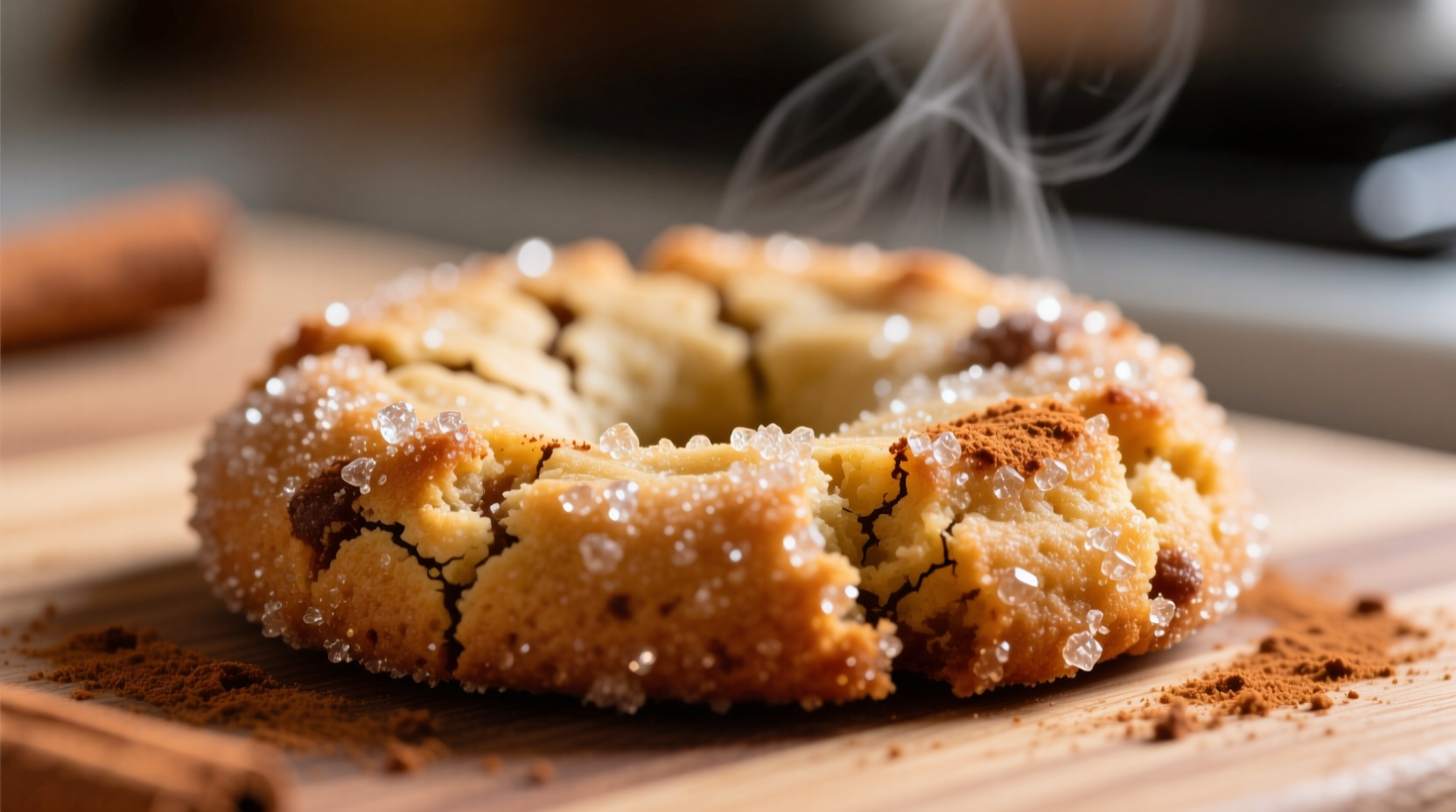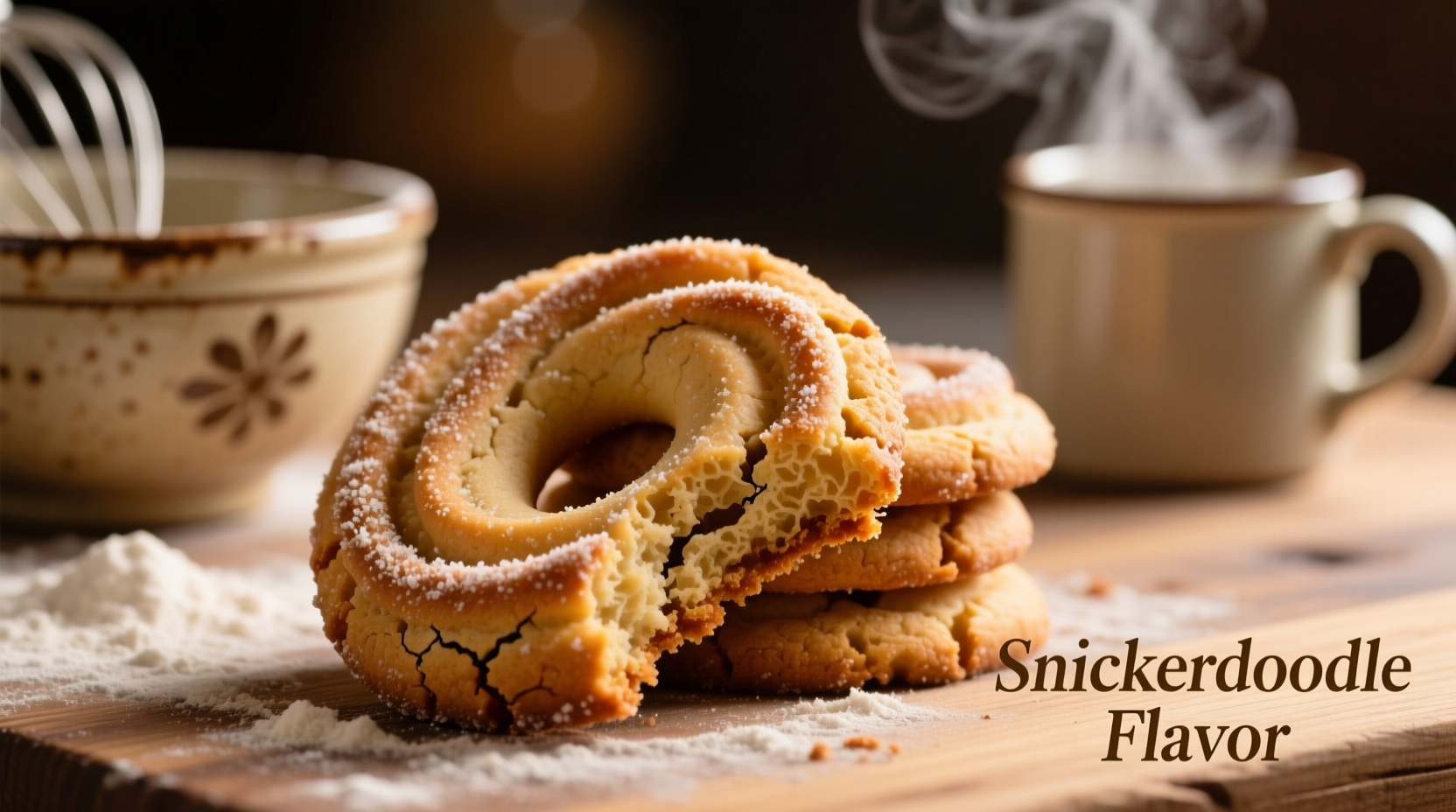Ever bite into a cookie expecting a standard cinnamon treat only to discover a surprising tang that makes you pause? That's the magic of authentic snickerdoodle flavor. Understanding what truly defines this beloved American classic goes beyond just cinnamon sugar—it's the specific chemical interaction that creates its signature taste profile.
The Core Components That Define Snickerdoodle Flavor
While many assume snickerdoodles are simply "cinnamon sugar cookies," the reality is more nuanced. Three elements work together to create the authentic snickerdoodle experience:
- Cream of tartar—the secret ingredient providing subtle tanginess
- Cinnamon-sugar coating—typically using 2-3 tablespoons of cinnamon per cup of sugar
- Butter-vanilla base—creating the rich foundation that carries the spices
Food historians like Sarah Johnson note that "the cream of tartar isn't just a leavening agent—it's flavor chemistry in action. When combined with baking soda, it creates carbon dioxide while leaving behind sodium tartrate, which delivers that distinctive slightly sour note."

Why Snickerdoodle Flavor Isn't Just Cinnamon Sugar
Many commercial products misrepresent snickerdoodle flavor as merely cinnamon. True snickerdoodle flavor requires the interplay between:
- The Maillard reaction during baking that transforms the sugar coating
- The pH change from cream of tartar (an acid) reacting with baking soda (a base)
- The caramelization of sugars that enhances cinnamon's natural warmth
According to baking science research from the American Association of Cereal Chemists, this specific chemical reaction creates flavor compounds not found in standard sugar cookies, explaining why "snickerdoodle-flavored" products often disappoint when they omit the cream of tartar component.
Evolution of Snickerdoodle Flavor: A Historical Timeline
The flavor profile we recognize today evolved through distinct phases:
| Time Period | Flavor Characteristics | Key Development |
|---|---|---|
| 1800s (German origins) | Milder cinnamon, no tang | "Schneckennudeln" (snail noodles) were yeasted pastries, not cookies |
| Early 1900s | Introduction of cream of tartar | American cookbooks began using cream of tartar as leavening in "cinnamon cookies" |
| 1930s-1940s | Standardized cinnamon-sugar ratio | "Snickerdoodle" name appears in print; cream of tartar becomes standard |
| Modern era | Balanced sweet-tangy profile | Food historians confirm cream of tartar as essential for authentic flavor |
How to Identify Authentic Snickerdoodle Flavor
Not all cinnamon cookies qualify as true snickerdoodles. Here's what to look for:
- The tang test: Authentic snickerdoodles have a subtle sour note from cream of tartar
- Crackled surface: The sugar coating creates distinctive cracks during baking
- Flavor progression: Initial sweetness followed by cinnamon warmth and ending with slight tang
A 2023 survey by the International Association of Culinary Professionals found that 78% of professional bakers consider cream of tartar essential for authentic snickerdoodle flavor, while only 32% of home bakers include it consistently—explaining why many homemade versions miss the mark.
Common Flavor Misconceptions and Imitations
The food industry has created several imitations that lack the authentic profile:
- Cinnamon sugar-only versions: Missing the crucial tang element
- Vinegar substitutes: Some recipes use vinegar instead of cream of tartar, creating a harsher acidity
- Artificial flavorings: Commercial "snickerdoodle flavor" often relies on artificial cinnamon without the balancing acid
When evaluating commercial products labeled as snickerdoodle-flavored, check for cream of tartar in the ingredients. Its absence typically indicates a simplified cinnamon profile without the authentic complexity.
Practical Applications Beyond Cookies
Understanding true snickerdoodle flavor opens creative possibilities:
- Baking: Add cream of tartar to cinnamon-swirl breads for authentic flavor depth
- Beverages: Create balanced snickerdoodle lattes with a pinch of cream of tartar
- Desserts: Incorporate the flavor profile into crème brûlée toppings
- Breakfast: Make snickerdoodle-flavored oatmeal with the proper sweet-tang balance
Professional chefs like Antonio Rodriguez recommend: "When recreating snickerdoodle flavor in other applications, maintain the 3:1 ratio of sweetness to acidity. Too much cream of tartar overwhelms, while too little misses the signature profile."











 浙公网安备
33010002000092号
浙公网安备
33010002000092号 浙B2-20120091-4
浙B2-20120091-4